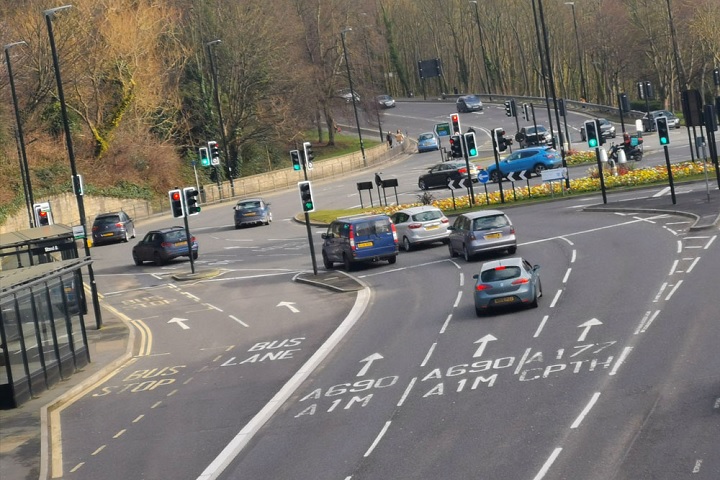
A third (33%) of drivers are still ignoring or are unaware of the ‘two-second’ gap rule, according to a recent survey by AA Accident Assist.
The poll of more than 12,500 drivers found that a quarter (25%) claimed that they knew of the two-second gap rule but often ignored it. Similarly, 5% claimed that they were unaware of the guidance set out in the Highway Code.
Previous research by AA Accident Assist from 2023 shows similar results when many drivers exhibited particularly bad driving behaviour after coming out of lockdown, showing this stubbornly reckless behaviour hasn’t improved.
Tailgating is often cited as the most frustrating behaviour displayed by other road users. Recent figures from National Highways show that approximately 147 people are killed or seriously injured on England’s motorways and major A-roads due to tailgating each year.
Official statistics from the DfT also confirm that tailgating remains an ongoing problem. Last year most car drivers were observed leaving a two to four second gap in free-flow traffic, while a quarter left a gap of less than two seconds.
Drivers unwilling to keep their distance run the risk of crashing into the vehicle in front of them, says the AA.
In 2024, 58% of repairs carried out by AA Accident Assist required a new bumper unit. As vehicles become more advanced, increased technology is often found within the bumpers. Parking sensors, cameras and cruise control radar systems often need repair and calibration which adds to the cost and time needed to fix the car after a collision.
Tim Rankin, managing director of AA Accident Assist, said; “It seems driver behaviour towards tailgating remains unmoved, with it being an all too regular experience on the roads. Regardless of motorways or local streets, drivers feel intimidated by others following too close behind.
“Our workload shows that bumpers and the technology within them are the most common repairs. As well as vehicle parts, personal injury claims due to tailgating related crashes are being made. In many cases, these crashes could be avoided simply by backing off the car in front.
“Nobody wants to spoil their summer holidays with an avoidable collision. By allowing at least a two-second gap between yourself and the car in front, you significantly reduce the risk of crashing into that vehicle. Similarly, if you are being tailgated, where safe to do so, pull over and let them pass. It is better to cut them loose rather than feel frustrated and try to slow them down.”
See: https://www.youtube.com/watch?v=2lAx_dp9CjY&t=388s
Nigel Albright
0
As a Driving Assessor often dealing with post-collision training, I often find a driver will knowingly drive too close, but will assure me “they can handle it”.
In a tailgating situation they may well be able to do so, but always overlook
1- the driver in front will feel intimidated, especially by a van, and
2- their own emergency braking will often result in the tailgater behind them colliding with the rear of their vehicle (and they will blame that driver).
3- They will then often be pushed into the vehicle in front that they were originally “able to handle”.
I speak from 20 years’ experience as a FireFighter attending ‘domino’ shunts, as well as 25 as an Assessor.
Philip Hastings, Shaftesbury
+4
> It seems driver behaviour towards tailgating remains unmoved, with it being an all too regular experience on the roads. Regardless of motorways or local streets, drivers feel intimidated by others following too close behind
Or reading this slightly differently, poor driver behaviour on motorways and dual carriageways is often exacerbated by those who choose to engage in poor discipline and not move over to the furthest left lane when safe to do so.
David Weston, Newcastle upon Tyne
+1
The advice should be “MINIMUM 2 second gap”. 2 seconds may be valid at lowish speeds, but the faster the vehicles a much, much, longer gap/distance is necessary. Why does one have to be so close to the vehicle in front anyway?
Hugh Jones, South Wirral
+4